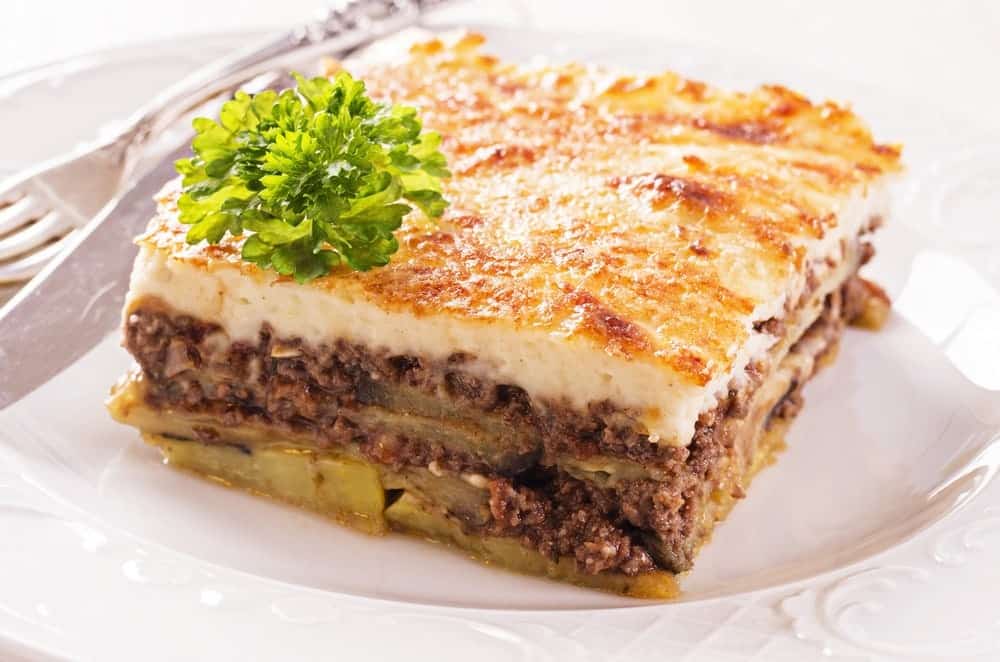Greek Moussaka

Greek Moussaka: A Culinary Journey to the Heart of Greece
In the realm of Mediterranean cuisine, few dishes hold a place as iconic and beloved as Greek moussaka. This layered masterpiece, with its rich flavors and tantalizing aromas, has captivated taste buds for centuries, becoming an integral part of Greek culinary heritage. Join us on a culinary journey as we explore the history, ingredients, and preparation of this delectable dish, unveiling the secrets that make it a true masterpiece of Mediterranean gastronomy.
A Culinary Tapestry Woven Through Time
The origins of moussaka can be traced back to the Byzantine Empire, where it was known as "moussakas," a term derived from the Greek word "mousaka," meaning "minced meat." Over the centuries, moussaka evolved, influenced by various cultures and culinary traditions. The Arabs introduced eggplant to the dish, while the Ottomans added spices and herbs, shaping the moussaka we know today.
A Symphony of Flavors and Textures
At its core, moussaka is a symphony of flavors and textures, a harmonious blend of minced meat, eggplant, potatoes, and a velvety béchamel sauce. The tender eggplant slices, grilled to perfection, provide a smoky, earthy foundation for the dish. The layers of minced meat, often a combination of lamb and beef, add a savory richness, while the potatoes contribute a soft, starchy texture. The béchamel sauce, with its creamy, nutty flavor, brings everything together, enveloping the other ingredients in a blanket of culinary bliss.
The Art of Layering: A Culinary Masterpiece in the Making
The preparation of moussaka is an art form, a delicate dance of layering and seasoning. The eggplant slices are carefully arranged in a single layer at the bottom of a baking dish, followed by a layer of minced meat, cooked with onions, garlic, tomatoes, and a blend of spices. The next layer consists of sliced potatoes, which are then topped with another layer of minced meat. The final touch is the béchamel sauce, poured evenly over the entire dish. As it bakes in the oven, the moussaka transforms into a golden-brown masterpiece, its tantalizing aromas filling the air.
A Culinary Journey for the Senses
When it comes to savoring moussaka, every bite is a journey for the senses. The crispy crust yields to reveal a tender interior, where the flavors of eggplant, meat, potatoes, and béchamel sauce dance harmoniously on the palate. The smoky notes of the eggplant blend seamlessly with the savory richness of the meat, while the creamy béchamel sauce adds a touch of decadence. Each forkful is a celebration of Greek culinary artistry, leaving a lasting impression on the taste buds.
Moussaka: A Culinary Ambassador of Greek Hospitality
Moussaka is more than just a dish; it is an embodiment of Greek hospitality and culinary pride. It is often served at family gatherings, celebrations, and special occasions, bringing people together to share a delicious meal and create lasting memories. Whether enjoyed in a traditional Greek taverna or prepared in the comfort of one’s own home, moussaka remains a culinary ambassador of Greece, showcasing the country’s rich culinary heritage and warm hospitality.
In Conclusion
Greek moussaka is a culinary masterpiece that has stood the test of time, captivating taste buds and hearts across generations. Its layers of flavors and textures, its rich history, and its role as a symbol of Greek hospitality make it a dish that transcends mere sustenance. It is an experience, a journey into the heart of Greek cuisine, where tradition, flavors, and warmth intertwine to create a truly unforgettable culinary experience.
Comments
Post a Comment